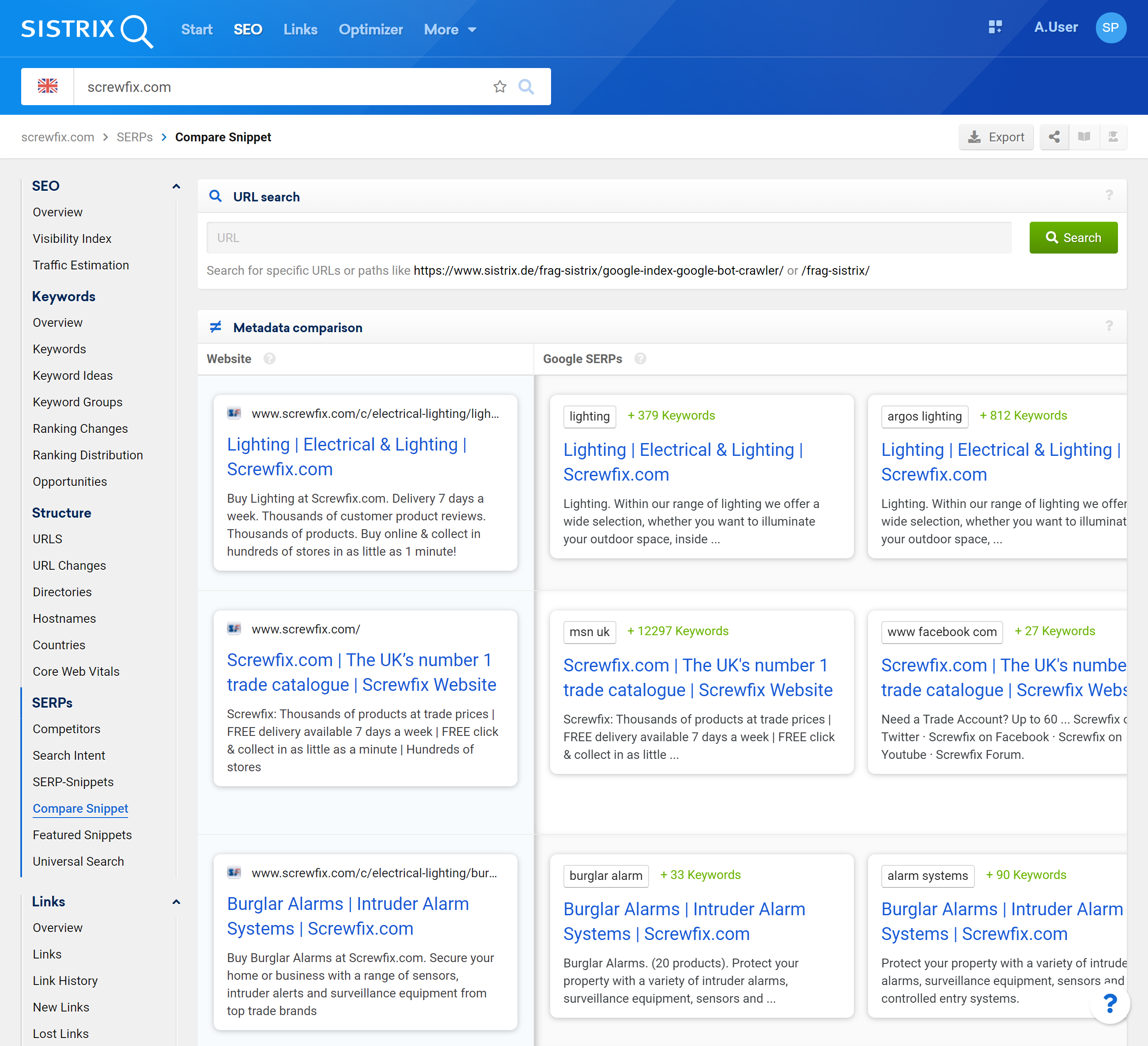Your title and description are the first point of contact with your website in Google results. A new SISTRIX feature analyses whether Google takes your information from the source text of the website or creates its own snippets.
SERP snippets are the flagship of your website in Google results pages: the combination of the website title and the description determines whether someone decides on your result or clicks another result.
In theory, Google takes your website title for the title tag and the meta description from your website’s source code. In practice, Google often builds its own snippets. With a new SISTRIX feature you can see the deviations between the information on your website and the SERP snippets at a glance.
We bring together two data sources for this purpose: on the one hand, our regular crawls of large parts of the Internet. There we get the title and the meta description of the website. On the other hand, there are the displayed snippets from the Google SERPs: here, too, are the title and description. In SISTRIX the new function looks like this:

In the left column with a blue background you can see the values as they are stored on the website. Our web crawlers regularly visit all the URLs we know and read both the title and the meta description from the website’s source code.
To the right you will find the most common variations that exist for the combination of the title and snippet for this URL in the Google SERPs. In the vast majority of cases, Google adapts the description and, more rarely, the title so that the searcher’s intention is better represented.
We’ll show you the most important combinations first, but you can view other combinations by scrolling. Above the snippet you can see an example keyword for which this version is displayed. With one click on the keyword you can jump into the keyword table and see all keywords for this snippet.
If Google does not usually include your self-authored description in the snippet, the following is relevant to you:
- The work so far has been in vain: Google does not display the description you have written for the user.
- Google doesn’t do this out of malice, but because the search engine is convinced that your descriptions won’t help the user.
- You have to adapt the descriptions you have written yourself so that they help the Google visitor. Fulfilment of the search intention is an important factor.
- If Google shows two different descriptions for each large keyword block, this can be an indicator that you should rather split the content of the page onto two separate websites.
At the top, in the search, you can filter the results in certain parts of the URLs of a domain. This allows analysis of snippets that are in a certain directory or whose URL contains a specific word.
This new function is part of the SISTRIX SEO module and is available immediately.